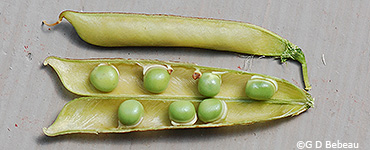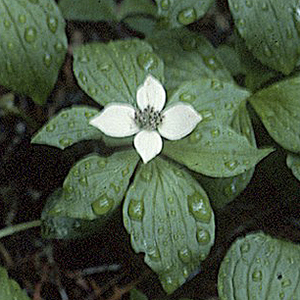
Friends of the Wildflower Garden
Propagation of the species by mechanical explosive tension
A visit to the Eloise Butler Wildflower Garden offers many opportunities to observe and learn about native plants but one such opportunity to difficult to observe - - that is - how some of our Minnesota native plants use explosive means to renew the species.
A plant’s life cycle goes through flowering, pollination, seeding, and die back; with many plants that is all within a growing season. Perpetuation of the species of most flowering plants depends upon pollination and reseeding and many are the means of achieving that. Instead of relying on the wind or birds or animals to scatter seed beyond the parent, several adaptions have evolved to provide distance and better changes of survival.
Seed dispersal
First we look at seed propagation by the method known as explosive dehiscence which ballistically ejects seeds from the mature seed capsule. Many species in the pea family do this, such as Lathyrus venosus and Lathyrus palustris. The seeds are arranged in two rows in a long slim capsule which, when mature, splits open along a longitudinal seam and twists, ejecting the seeds.
Below: 1st photo - An immature pod of Lathyrus palustris. 2nd photo - the mature pod of after splitting and twisting, having ejected most of the seeds.


In the Touch-me-nots (Jewelweeds) the mechanical energy is stored in the soft green cell walls of the pod, which when touched, collapse and twist within 4 ms (mille-seconds) and eject seeds to an average distance of 1.5 meters. (1) Children in the Wildflower Garden love observing this.
Below: 1st photo - the maturing seed pod of Spotted Touch-me-not (Impatiens capensis). 2nd photo - The coiled and twisted remains of the seed pod walls after the explosive dehiscence.
The Witch Hazel (whose seeds mature in the following year) has a seed capsule that uses mechanical energy created when the capsule, maturing from the wet to dry stage, expands in one area and contracts in a different area of its tissue, putting pressure on the base of the capsule which has a soft fleshy area and on the enclosed seed, which then explosively ejects at a very high speed a considerable distance. The snapping sound that is heard occurs at the instance of seed release. Our Garden species, Hamamelis virginiana has been reported to eject seeds as far as 6 meters. A research study (noted below) using Hamamelis mollis gives details of how the process works. H. mollis ejects seeds at the seed of a rifle bullet.(2) Both Thoreau and Teale have written about their experiences with this snapping release.(3)
Below: 1st photo - open Witch Hazel seed capsules. 2nd photo - Diagram of the opening time of H. mollis, going from a wet capsule to a dry capsule. Diagram from Royal Society Report.(3)


Other species of plants that use this ballistic dispersal mechanism include wild violets and the wild geraniums
Pollen dispersal

Next we look at flower pollination achieved by a similar mechanism. Our example is out native Bunchberry, Cornus canadensis, which was indigenous to the Wildflower Garden and survived until the late 1980s when habitat changes caused its loss.
Bunchberry stamens with the pollen on their anthers are shaped like medieval catapults. The petals spring open within 0.2 ms and the stamens accelerate upward at a force of 2,400g and propel pollen into the air, up to 10 times the flower height, where even a light breeze will carry it to other plants to insure cross-pollination. This flower opening, at less than 0.5 ms is believed to be the fastest flower opening of any plant and is considerably faster that the seed release of the Touch-me-nots detailed above.(4) ❖
Below: Video frames of Bunchberry flower expelling pollen in 1.0 ms. Source - A record-breaking pollen catapult. Nature 435:164.

Photos: G D Bebeau or as credited. Text by G D Bebeau.
Notes and additional reading:
(1) Research study of Touch-me-not seed dispersion. (pdf)
(2) Research study of Hamamelis mollis, Royal Society Publishing (pdf).
(3) Witch Hazel experiences of Thoreau and Teale.
(4) Research study of Bunchberry pollen dispersion - A record-breaking pollen catapult. Nature 435:164.